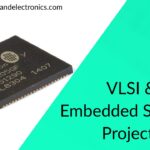What Is SCADA, Why SCADA Is Needed, Advantages, Disadvantages
Hello guys, welcome back to my blog. In this article, I will discuss what is SCADA, why SCADA is needed, the advantages of “Supervisory Control and Data Acquisition”, and the disadvantages of SCADA.
Ask questions if you have any electrical, electronics, or computer science doubts. You can also catch me on Instagram – CS Electrical & Electronics.
Also, read:
- Top 10 Transformer Manufacturers In India, Transformer Companies.
- Top 10 Electrical Vehicle Manufacturers In India, Electric Vehicle Company.
- Top 10 Lithium-ion Battery Manufacturing Companies In The World.
What Is SCADA
Topics that are covered:
- What is SCADA
- Objectives of SCADA
- Master Terminal Unit (MTU)
- Remote Terminal Unit (RTU)
- Communication Network
- Why SCADA it is Required?
Along with the evolution of Microprocessors and PLC ideas, the name SCADA was coined around 1970. This aided in the creation of a completely automated system that may be employed in industry remotely. As the years passed, distributed SCADA systems emerged in the early 2000s.
What is SCADA?
“Supervisory Control and Data Acquisition,” or SCADA, is an acronym for “Supervisory Control and Data Acquisition.” SCADA is a sort of process control system architecture that enables high-level process supervisory management and control using computers, networked data transfers, and graphical Human Machine Interfaces (HMIs). To connect with industrial process plants and equipment, SCA_DA systems interface with other devices such as programmable logic controllers (PLCs) and PID controllers.
SCADA systems can be operated virtually, allowing the operator to monitor the entire process from his or her office or control room. By utilizing SCADA effectively, time can be saved. SCADA systems are widely employed in the Oil and Gas industry, as an outstanding example. Inside the production plant, large pipelines will be used to transport oil and chemicals.
As a result, safety is essential, as there should be no leaking along the pipeline. If a leak occurs, a SCADA system is utilized to locate the source of the leak. It deduces the information, sends it to the system, shows it on the computer screen, and sends an alarm to the operator. Both hardware and software components are included in generic SCA_DA systems.
SCADA software should be installed on the PC used for analysis. The input data is received by the hardware component, which then feeds it into the system for further analysis. Modern SCADA systems emerged, allowing us to control and monitor real-time data from anywhere on the planet.
The real-time interaction boosted commerce and propelled industry expansion to new heights. Even though the operator had little experience with software creation, he was able to operate sophisticated SCADA systems. To re-imagine the SCADA architecture, modern SCADA systems are increasingly relying on cloud-based SCA_DA apps.
Although the model’s fundamentals are the same, physical equipment is frequently digitized and automated, making operations more intuitive, adaptable, and scalable. Modern SCA_DA systems combine the advantages of control devices with IT technology’s flexibility and functionality. Access, transparency, control, and decision-making are all key features of modern SCADA systems.
Objectives of SCADA
- Continuously monitor the physical parameters: SCADA systems continuously monitor the physical parameters.
- Measuring: It determines the processing parameter.
- Data Collection: It collects information from RTUs (Remote Terminal Units), data loggers, and other sources.
- Data Communication: It allows MTU and RTU units to communicate and transmit significant amounts of data.
- Control: The process is monitored and controlled in real-time online.
- Automation: It aids in the automatic transmission and usefulness of information.
The major components of a SCADA system include:-
- Master Terminal Unit (MTU)
- Remote Terminal Unit (RTU)
- Communication Network (defined by its network topology)
Master Terminal Unit (MTU)
The MTU is the central component of the SCADA system. It consists of a computer, a PLC, and a network server that assists MTU in communicating with RTUs. MTU initiates communication, collects and saves data, and aids in the interaction with operators and data transmission to other systems.
Remote Terminal Unit (RTU)
Each Remote Terminal Unit (RTU) is connected to sensors and actuators when used in the field. The data from these sensors is collected by RTU, which then delivers it to MTU. RTUs have the ability to store data. As a result, when MTU delivers the appropriate command, it caches the data and transmits it. Units that have recently been developed are used in sophisticated systems that use PLCs as RTUs. This allows for direct data transfer and control without the need for an MTU signal.
Communication Network
In general, the term “network” refers to a connection. A communication network is defined as a connection between an RTU in the field and an MTU in a central location. For networking, a bidirectional wired or wireless communication channel is used. Fiber optic cables, twisted pair cables, and other communication media are also employed.
Why SCADA it is Required?
A SCADA system is a set of hardware and software components that enables manufacturing units to accomplish certain tasks. The following are some of the key features:
- • Real-time monitoring and data collection.
- • Human Machine Interface interaction with field devices and control stations (HMI).
- • To keep track of system events in a log file.
- • Virtually control the manufacturing process.
- • Reports and information storage.
SCADA systems are used to regulate and monitor physical processes, such as power transmission, gas, and oil transit in pipelines, water distribution, traffic lights, and other systems that form the foundation of modern society. The security of these SCA_DA systems is critical because their compromise or destruction would have far-reaching consequences in areas of society unrelated to the original breach. A blackout induced by a faulty electrical SCA_DA system, for example, would result in financial losses for all consumers who got electricity from that source.
We’re seeing how priorities like flexibility and data-driven decision-making are re-imagining the purpose of modern-day SCADA systems, rather than IIOT forcing them out. SCADA systems aren’t going away since integration is the way of the future. Instead, we’ll look at how IIOT trademarks like cloud computing, mobility and analytics, AI, machine learning, and more are becoming markers for selecting and deploying successful HIM/SCADA software.
I hope this article may help you all a lot. Thank you for reading.
Also, read:
- 10 Tips To Maintain Battery For Long Life, Battery Maintainance
- 10 Tips To Save Electricity Bills, Save Money By Saving Electricity
- 100 (AI) Artificial Intelligence Applications In The Automotive Industry
- 100 + Electrical Engineering Projects For Students, Engineers
- 1000+ Control System Quiz, Top MCQ On Control System
- 1000+ Electrical Machines Quiz, Top MCQs On Electrical Machines
- 1000+ MATLAB Simulink Projects For MTech, Engineering Students
- 50 Tips To Save Electricity At Home, Shop, Industry, Office
Author Profile
- Content Writer
Latest entries
 All PostsAugust 25, 2021Top 16 Highest Paying Engineering Jobs in the USA For Freshers
All PostsAugust 25, 2021Top 16 Highest Paying Engineering Jobs in the USA For Freshers All PostsAugust 23, 2021Top 10 Smart Cities In The World, Best Cities To Visit In The World
All PostsAugust 23, 2021Top 10 Smart Cities In The World, Best Cities To Visit In The World All PostsAugust 21, 2021Top 20 VLSI & Embedded Systems Projects for Mtech Students
All PostsAugust 21, 2021Top 20 VLSI & Embedded Systems Projects for Mtech Students All PostsAugust 21, 2021Top 20 Power Systems Projects For MTech Students, Engineering Students
All PostsAugust 21, 2021Top 20 Power Systems Projects For MTech Students, Engineering Students








